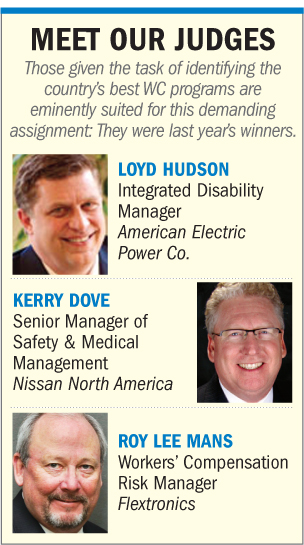Times are undeniably tough for American workers. Stagnant wages, brutal commutes and the nagging fear that they may at any time join the tens of millions of their compatriots searching for employment.
But one area where the U.S. workforce is very well served: workers' comp programs.
 For our fifth annual NU Award For Excellence in Workers' Comp Risk Management, sponsored by NCCI, I was impressed not only with the volume of submissions we received—but especially by the creativity and quality exhibited in the programs.
For our fifth annual NU Award For Excellence in Workers' Comp Risk Management, sponsored by NCCI, I was impressed not only with the volume of submissions we received—but especially by the creativity and quality exhibited in the programs.
Recommended For You
Want to continue reading?
Become a Free PropertyCasualty360 Digital Reader
Your access to unlimited PropertyCasualty360 content isn’t changing.
Once you are an ALM digital member, you’ll receive:
- Breaking insurance news and analysis, on-site and via our newsletters and custom alerts
- Weekly Insurance Speak podcast featuring exclusive interviews with industry leaders
- Educational webcasts, white papers, and ebooks from industry thought leaders
- Critical converage of the employee benefits and financial advisory markets on our other ALM sites, BenefitsPRO and ThinkAdvisor
Already have an account? Sign In Now
© 2025 ALM Global, LLC, All Rights Reserved. Request academic re-use from www.copyright.com. All other uses, submit a request to [email protected]. For more information visit Asset & Logo Licensing.








